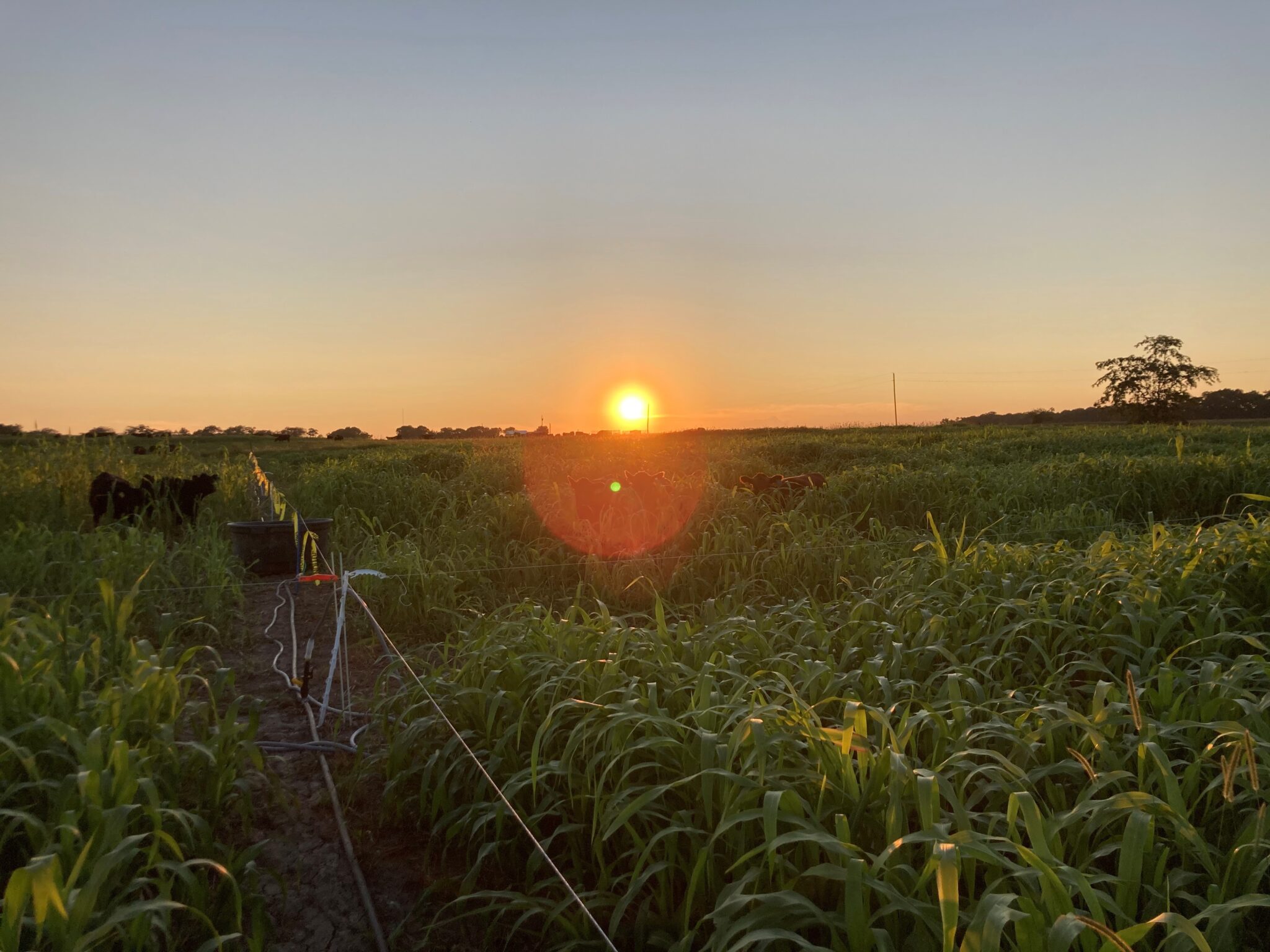There is much that can be done for the wellbeing of forages in the late summer. What follows are some management practices that should be considered as the 2023 growing season continues and as preparation for the 2024 happens. Unlike corn and soybeans that are nearing physiological maturity as they edge into September, perennial legumes and cool-season grasses continue to grow well into the fall, and all perennial species are in preparation of protecting themselves against cold winters. What follows are some bullet point “best management practices” to consider as the growing season continues.

The summer sunset is a reminder that much can be done in late summer with forage management. (Photo Credit: Keith Johnson)
August
- Southern Indiana: If tillage occurs in preparation for an August seeding, do so by mid-month.
Incorporate recommended fertilizers prescribed by soil test. - Northern Indiana: Seed new pasture or hay fields early in the month. Southern Indiana: Seed new pasture or hay fields by late month. Remember, a firm seedbed is essential and seed at the recommended depth. Do not bury the seed!
- Adjust soil pH (if necessary) by adding limestone to pastures where legumes will be sown during late winter.
- Continue to rotate pastures, scout for potato leafhopper, and harvest hay when it is a proper maturity and projected weather conditions are rain free.
- If dry weather conditions return, implement precautionary measures to prevent nitrate toxicity.
- Purchase small grain, annual ryegrass, and/or forage turnip seed and sow for fall grazing where land was used for wheat grain harvest and early corn silage harvest. Check herbicide labels used in 2022 and 2023 for plant back restrictions.
- Late in the month, apply approximately 50 pounds of nitrogen fertilizer per acre to cool-season grass paddocks that will not be grazed for the rest of the growing season so growth can stockpile for late fall and early winter grazing.
September
- Complete the final perennial legume and cool-season grass harvest of the growing season so there is at least one month between harvest and a killing freeze. This practice increases the winter survivability of the forages.
- After hay harvest, fertilize (if needed) to keep stands productive. A good rule of thumb: Apply 15 pounds of P2O5 and 60 pounds of K2O per year for each ton of alfalfa hay harvested.
- Graze grass-legume pastures lightly for the remainder of the season or rest them so legume crown reserves can replenish.
- Provide poloxalene supplements to ruminant livestock grazing bloat-causing legume pastures, especially during lush growth periods.
- Soil test fields intended for spring forage seeding and apply amendments (lime and fertilizer) as soon as possible (if recommended).
- Harvest corn silage when moisture is appropriate for the silo type and size being used. A moisture level of 65 percent works well for most silo types.
- Scout new alfalfa fields for potato leafhopper. The insect can be especially harmful to young alfalfa seedlings.
- Prepare for grazing corn residues after grain harvest if the residues meet the nutritional requirements of the livestock. Check the exterior fence for any needed repairs. Strip graze the corn residues, if significant ear drop occurs.
- Apply a herbicide in late September/early October that is highly effective on controlling
actively growing weeds if they are a concern in perennial grass pastures. Read the labels for
complete details about the possible herbicide choices before making a final selection. - Purchase winter small grain or annual ryegrass seed where it can be grazed, hayed, or ensiled
the following spring. Broadcast seeding by aircraft into soybeans and corn as the crops senesce
can be successful provided moisture is sufficient during germination and seedling development.
Check herbicide labels used in 2022 and 2023 for plant back restrictions. Seed winter wheat
after the Hessian fly-free date.


